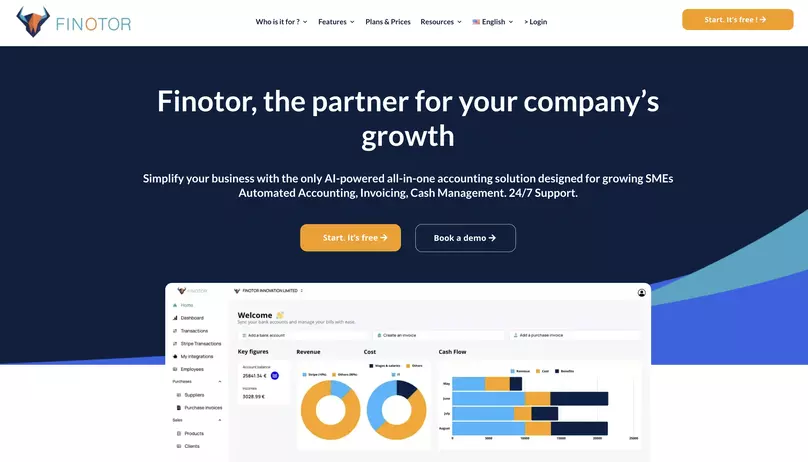Contents
- 1 Understanding Gross Profit Margin Basics
- 2 Calculating Gross Profit Margin Accurately
- 3 Improving Your Company’s Gross Profit Margin
- 4 Analyzing Gross Profit Margin to Drive Business Growth
- 5 Calculating Gross Profit Margin Accurately
- 6 Improving Your Company’s Gross Profit Margin
- 7 Analyzing Gross Profit Margin to Drive Business Growth
- 8 Analyzing Gross Profit Margin to Drive Business Growth
Understanding Gross Profit Margin Basics
Definition of Gross Profit Margin
At the heart of financial analytics within any business lies the all-important metric: Gross Profit Margin. Gross Profit Margin serves as a pivotal indicator of a company’s financial health, measuring the difference between revenue and the Cost of Goods Sold (COGS), expressed as a percentage. This figure not only reflects the efficiency of a company in managing labor and supplies in the production process but also indicates the portion of revenue that exceeds the direct costs associated with producing goods and services.
The Role of Gross Profit in Business
Gross profit stands as a cornerstone of any business’s financial statement, offering a clear glimpse into the operational efficiency of the enterprise. It is the breathing room that allows a business to cover its indirect expenses such as administrative costs, research and development, and marketing efforts. Diving deeper, gross profit underpins strategic pricing, inventory management, and can influence key business decisions. For a comprehensive tool that aids in financial management, businesses can turn to Finotor’s all-in-one solution which streamlines accounting, financial, and bank account management processes.
Comparing Gross Profit Margin Across Industries
Comparing gross profit margin is not a one-size-fits-all approach. Margins can vary significantly across different industries due to the nature of costs involved in the production of goods or services. For instance, a tech company might exhibit higher gross profit margins compared to a grocery store chain because of the differing costs and pricing strategies associated with each sector. Understanding these nuances is crucial for business owners and investors alike to set realistic benchmarks for financial success. For further reading on this topic, one can visit NetSuite’s discussion on gross profit margins.
Calculating Gross Profit Margin Accurately
Identifying Revenue and Cost of Goods Sold (COGS)
The initial step in calculating the Gross Profit Margin is accurately identifying the total revenue and subtracting the Cost of Goods Sold. Revenue, the total income generated from sales, is straightforward, while COGS includes all direct costs associated with producing a company’s goods or services. It’s crucial to note that COGS should not contain any indirect expenses like utilities or rent.
Step-by-Step Gross Margin Calculation Process
To compute the Gross Profit Margin, one must divide the gross profit (revenue minus COGS) by the total revenue and multiply by 100 to get a percentage. This percentage reflects the portion of each sales dollar that results in gross profit. Keeping track of these figures can be made more straightforward with Finotor’s platform, which integrates smart tools for financial analytics.
Common Mistakes to Avoid in Calculation
Common pitfalls in the calculation include mixing up gross profit with net profit and overlooking variances in inventory accounting practices. Vigilance is key when categorizing expenses to ensure the accuracy of the Gross Profit Margin. Implementing robust accounting software, like that offered by Finotor, can mitigate these risks by providing precise tracking and reporting features.
Improving Your Company’s Gross Profit Margin
Strategies for Reducing Costs
Improving your company’s Gross Profit Margin can be achieved by adopting cost-reduction strategies. This could include negotiating better terms with suppliers, implementing lean manufacturing techniques, or reducing production waste. By lowering the COGS, businesses can see a direct impact on their margins, leading to increased profitability.
Optimizing Pricing Strategies
Another avenue for improving Gross Profit Margin is through the optimization of pricing strategies. This requires a keen understanding of the market, demand elasticity, and competitor pricing. A strategic approach to pricing can help in maximizing profits without sacrificing sales volume.
Incorporating Technology and Automation
Technological advancements, such as the solutions provided by Finotor, offer a third pathway to improving Gross Profit Margins. Automation of routine tasks reduces the scope for human error and saves time, while AI and machine learning can provide insights for better financial decision-making.
Analyzing Gross Profit Margin to Drive Business Growth
Using Gross Margin to Make Business Decisions
Gross Profit Margin is more than just a number; it’s a tool that can guide business strategies and decision-making. By analyzing this key metric over time, companies can identify trends, anticipate changes in the market, and adjust their strategies accordingly to maintain or improve profitability.
Benchmarking and Competitor Analysis
Benchmarking Gross Profit Margin against industry standards and competitors provides a realistic perspective on where a business stands in the market. This comparative analysis can uncover strengths to capitalize on and weaknesses to address, driving strategic improvements.
Long-term Benefits of Maintaining a Healthy Gross Margin
A healthy Gross Profit Margin is indicative of a sustainable business model. It suggests a company has enough financial buffer to invest in growth opportunities, innovate, and weather economic downturns. Long-term, a robust margin can lead to business stability and increased shareholder value.
Calculating Gross Profit Margin Accurately
Identifying Revenue and Cost of Goods Sold (COGS)
The first step in calculating your company’s gross profit margin is to accurately identify your total revenue and the cost of goods sold (COGS). Revenue is the income your company generates from business activities, such as sales of products or services. COGS includes all the direct costs associated with the production of the goods your company sells. This typically encompasses material costs, direct labor costs, and any overhead directly tied to the production process.
Step-by-Step Gross Margin Calculation Process
After identifying revenue and COGS, the gross profit margin can be calculated with the following formula: Gross Profit Margin = (Revenue – COGS) / Revenue. Multiply the result by 100 to obtain a percentage. For a detailed breakdown, you can consult resources like the Corporate Finance Institute’s guide on the gross margin ratio. This ratio provides a glimpse into how efficiently a company is producing and selling its goods.
Common Mistakes to Avoid in Calculation
Calculating the gross profit margin may seem straightforward, but there are common pitfalls to avoid. These include mixing up gross profit with net profit, which factors in all expenses, not just COGS. Also, ensure accurate tracking of all direct costs; underestimating these can lead to an inaccurately high gross margin. Avoid one-time revenues or expenses in the calculation, as these can distort the true profitability of your core business activities.
By understanding and deftly calculating your company’s gross profit margin, you’re better positioned to make informed decisions that can positively impact your financial health. Tools like Finotor’s comprehensive financial management platform can automate and streamline this process, ensuring accuracy and saving valuable time.
Improving Your Company’s Gross Profit Margin
Strategies for Reducing Costs
Reducing costs is a pivotal strategy for enhancing your company’s gross profit margin. Start by conducting a thorough review of your production process to identify areas of waste or inefficiency. Negotiating better terms with suppliers, or finding more cost-effective sources for materials, can also significantly lower the Cost of Goods Sold (COGS). Further, consider streamlining operations and reducing overhead costs by consolidating tasks or roles where feasible. Implementing lean management principles can aid in creating a more efficient operation that not only reduces costs but also improves product quality.
Optimizing Pricing Strategies
Another effective approach to improve gross profit margin is by optimizing pricing strategies. This may involve analyzing the market to adjust prices without losing competitive edge or customer loyalty. Utilizing a tiered pricing model can cater to different customer segments and maximize revenue potentials. Additionally, offering bundled products or services can encourage customers to purchase more, increasing the average transaction value. It’s crucial to balance pricing to cover costs and desired margins while remaining attractive to consumers.
Incorporating Technology and Automation
Embracing technology and automation can lead to significant improvements in gross profit margin. Tools like Finotor provide an all-in-one solution for financial management, integrating with banking systems and platforms like Stripe and WooCommerce for seamless reconciliations. By automating financial processes through Artificial Intelligence and Machine Learning, businesses can reduce manual errors and save time on tedious tasks. This efficiency not only cuts costs but also allows companies to focus on core activities, adding value to the business. For more insights on calculating gross margin, visit FreshBooks or Indeed.
Analyzing Gross Profit Margin to Drive Business Growth
Using Gross Margin to Make Business Decisions
Gross margin is a critical metric used to make informed business decisions. By understanding how much profit is made after accounting for the costs of goods sold, managers can determine the success of products or services, identify cost-saving opportunities, and decide where to focus development efforts. Regularly analyzing gross margin helps businesses to react quickly to market changes, adjust strategies accordingly, and support sustainable growth.
Benchmarking and Competitor Analysis
Benchmarking against industry standards and competitor analysis are essential for understanding where your company stands in terms of gross profit margin. This involves comparing your margins with those of competitors and industry averages to identify areas of improvement or competitive advantage. Through benchmarking, you gain insights into pricing, efficiency, and financial health, enabling strategic adjustments to enhance profitability.
Long-term Benefits of Maintaining a Healthy Gross Margin
Maintaining a healthy gross margin is vital for long-term business viability. It provides the financial cushion necessary to invest in new products, services, and market expansion. A strong gross margin supports research and development, marketing strategies, and can buffer the business during economic downturns. Moreover, it indicates to investors and stakeholders the company’s ability to manage costs effectively and generate sustainable revenue.
Analyzing Gross Profit Margin to Drive Business Growth
Understanding the nuances of gross profit margin is paramount for any business looking to expand and thrive. By analyzing this key financial metric, companies can make informed decisions, strategize effectively, and ultimately drive business growth. Finotor’s comprehensive financial management suite provides the tools needed to delve into these insights seamlessly.
Using Gross Margin to Make Business Decisions
Gross profit margin is not just a number to track; it is a pivotal indicator that can influence a wide array of business decisions. From product pricing to cost management, and understanding the profitability of different business segments, gross margin serves as a compass for strategic planning. By leveraging data analytics and intelligent financial tools, businesses can interpret gross margin trends and make adjustments that align with their growth objectives.
Benchmarking and Competitor Analysis
A keen understanding of where your business stands in comparison to industry benchmarks and competitors is essential. Gross profit margin can serve as a baseline for these comparisons. By examining industry standards through resources such as CFO Hub’s insights on gross profit margin or Brex’s journal on profit margins, companies can set realistic goals and understand their competitive position in the market. This benchmarking process can unearth opportunities for improvement and help businesses stay ahead in their respective industries.
Long-term Benefits of Maintaining a Healthy Gross Margin
A healthy gross profit margin is indicative of a company’s robust financial health and its ability to sustain growth over time. It reflects the efficiency of production processes, the success of pricing strategies, and the company’s resilience against market fluctuations. By maintaining a strong gross margin, businesses can reinvest in innovation, expand their operations, and build a buffer against economic uncertainties. Finotor’s all-in-one solution plays a crucial role in maintaining this financial wellness by optimizing financial operations and streamlining cost management.
In conclusion, analyzing and understanding gross profit margin is instrumental in steering a company towards long-term success. The integration of comprehensive financial tools like those offered by Finotor can simplify and enhance this analytical process, ultimately leading to better decision-making and sustained business growth.









